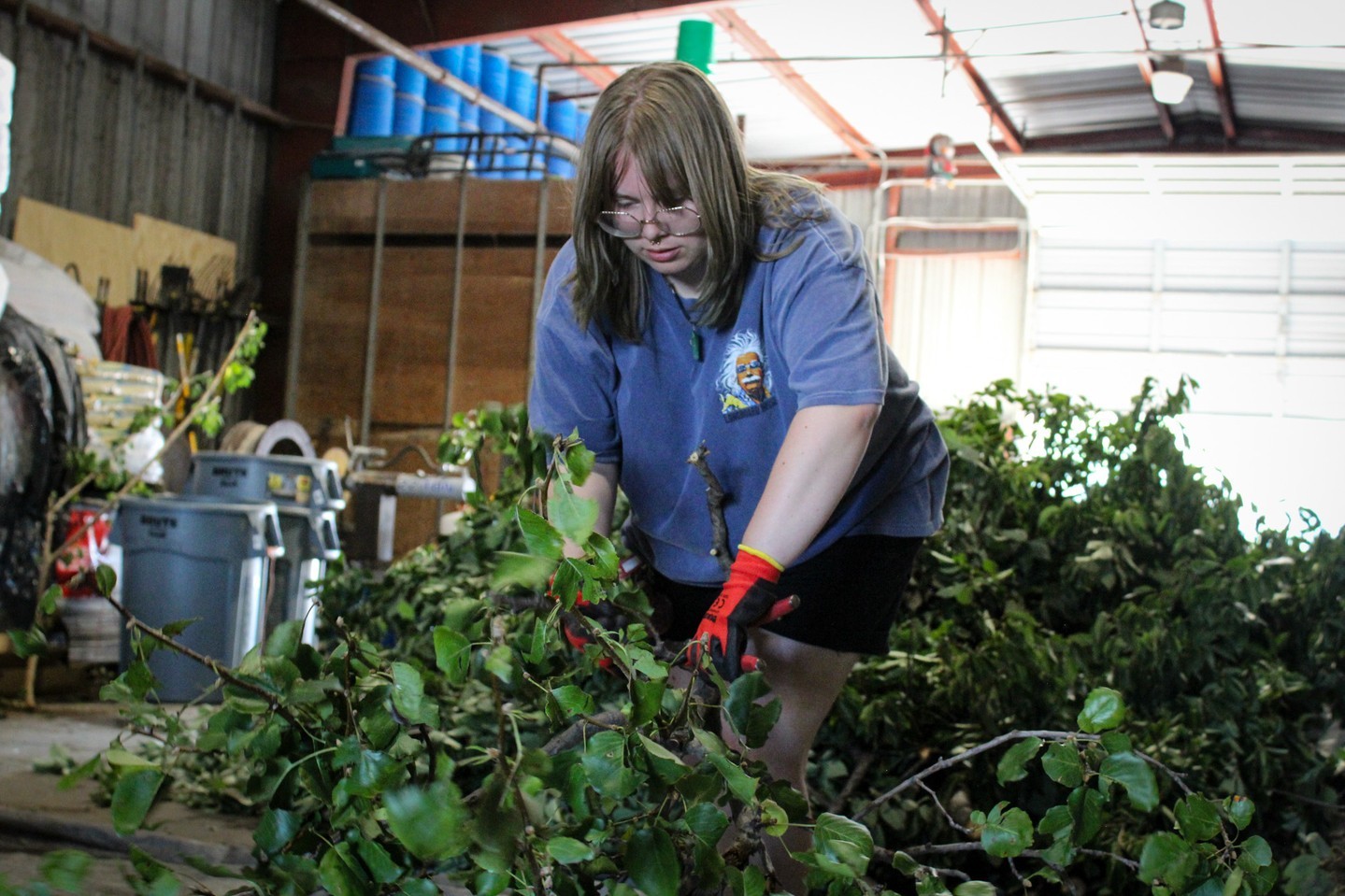- Impact of the storm on the Zoo and community
- Role of emergency volunteers in cleanup and silage production
- Nutritional and ecological benefits of silage and browse
- Importance of year-round nutrition for zoo animals
- Broader implications for wildlife conservation and community resilience
Last week’s storm might have left the Zoo and our community with a lot of downed branches, but there’s a silver lining! This recent weather event caused considerable damage, with numerous branches littering both the zoo grounds and the surrounding community. While the initial impact seemed purely negative, it soon became apparent that these fallen limbs offered an unexpected boon for the Zoo’s inhabitants and the broader ecosystem as well. From transforming debris into nutritional supplements for animals to emphasizing the crucial contributions of volunteers, this experience underscores the interdependence of human and natural communities in maintaining environmental and animal welfare.
Impact of the Storm on the Zoo and Community
Last week’s storm was both forceful and expansive, affecting not only the Zoo but also the larger neighborhood. High winds and heavy rainfall led to a significant number of downed trees and branches, disrupting regular activities and posing potential safety hazards. In the immediate aftermath, Zoo staff and local authorities prioritized clearing pathways and securing areas to prevent any further risks. Despite the challenges, this natural disruption stimulated a reconsideration of resource management and conservation methods within the Zoo and the community.
Role of Emergency Volunteers in Cleanup and Silage Production
Amid the chaos brought about by the storm, emergency volunteers emerged as unsung heroes. Quickly mobilized, these dedicated individuals played a crucial role in collecting, sorting, and repurposing the fallen branches. Their efforts culminated in the production of an impressive 679.3 lbs of silage. Silage, a type of preserved forage, is a staple in the diet of many herbivorous zoo animals. Made through the process of fermentation, it retains high nutritional value, making it an ideal supplement, especially during months when fresh browse is scarce.
The work of these volunteers went beyond mere cleanup; they actively contributed to the recycling of natural resources, turning what could have been waste into valuable sustenance for the Zoo’s animals. Their dedication not only stabilized an immediate post-storm situation but also contributed to the long-term well-being of the Zoo’s diverse inhabitants.
Nutritional and Ecological Benefits of Silage and Browse
Silage offers a myriad of benefits for the dietary needs of zoo animals. It is especially vital during winter months when natural browse—leaves, twigs, and other edibles that herbivores feed on—becomes scarce. The nutritional profile of silage includes essential fibers, vitamins, and minerals that are crucial for the animals’ digestive health and overall well-being.
Producing silage from storm-fallen branches is a prime example of resource efficiency and ecological balance. This practice reduces waste and repurposes natural materials that would otherwise degrade slowly, releasing carbon back into the atmosphere. By converting debris into a useful product, the Zoo demonstrates an excellent model of closed-loop ecological management.
Furthermore, feeding animals with locally-produced browse minimizes the need to import feed from external sources, reducing the carbon footprint associated with transport and packaging. Localized feed production highlights a sustainable approach to zoo management, emphasizing conservation and efficient resource use.
Importance of Year-Round Nutrition for Zoo Animals
Ensuring consistent, year-round nutrition is crucial for the health and longevity of zoo animals. Variations in diet can have significant impacts on their physical and mental well-being. Seasonal changes, such as the onset of winter, limit the availability of fresh foliage and other natural foods.
By creating a substantial reserve of silage, the Zoo can plan for these shortages and maintain balanced diets for its creatures throughout the year. Herbivores, in particular, benefit from a consistent supply of high-quality browse because it closely mimics their natural feeding habits. Proper nutrition ensures these animals sustain optimal health, which in turn supports their immune systems and reduces the incidence of disease.
Moreover, maintaining a stable diet helps in the management of breeding programs and overall animal welfare initiatives. Balanced nutrition not only promotes physical health but also contributes to mental stimulation and social behaviors, essential factors in the well-being of captive animals.
Broader Implications for Wildlife Conservation and Community Resilience
The experience of transforming storm debris into silage underscores broader themes in wildlife conservation and community resilience. Wildlife conservation efforts often emphasize the importance of sustainable practices and resource management. The Zoo’s ability to turn a natural disaster into a source of nourishment for its animals is a testament to resilience and adaptability.
These practices also foster a sense of community involvement and awareness. Engaging local volunteers in these conservation activities strengthens communal ties and emphasizes the role of collective action in environmental stewardship. The community’s active participation in these initiatives helps spread awareness about the importance of wildlife conservation and responsible resource management.
Additionally, the storm and subsequent cleanup offer valuable lessons in emergency preparedness and response. By recognizing the interdependence between human activity and natural events, both the Zoo and the community can develop better strategies to mitigate and adapt to future disruptions.
This recent experience with the storm shows how challenges can be turned into opportunities through concerted effort and innovative thinking. The production of nearly 680 lbs of silage from storm debris not only supports the nutritional needs of zoo animals but also highlights the critical roles that volunteers and sustainable practices play in conservation efforts. This process strengthens the wildlife community while promoting broader environmental stewardship principles. This journey exemplifies how human ingenuity and nature can harmoniously intersect to benefit all forms of life.
*****
Source Description
Last week’s storm might have left the Zoo and our community with a lot of downed branches, but there’s a silver lining!
These fallen limbs are now turning into delicious snacks for a variety of animals. Thanks to our incredible emergency volunteers, we’ve produced an impressive 679.3 lbs of silage. This will ensure our animals enjoy tasty, nutritious browse even during the winter months.


